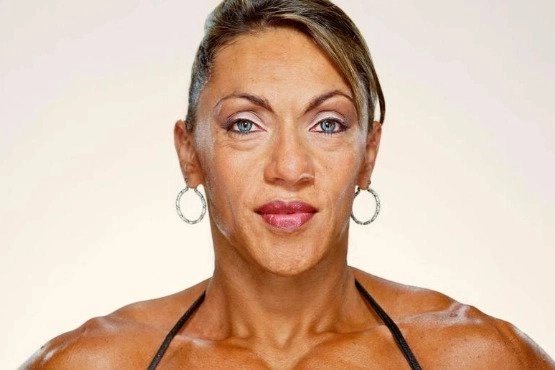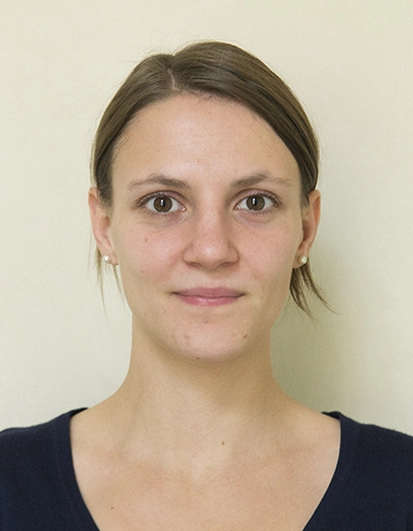Croatian artist and graduate of the Prague Academy of Fine Arts Dragana Živanović points out the desire to meet the historical ideal of masculine beauty and strength in her work. She drew the eyes of art critics thanks to her sculptural paintings depicting bodybuilders. In them, she ironically reflected the vain need to build masculinity through muscles, while at the same time drawing attention to the superficiality of contemporary society with its strict requirements for both female and male appearance. German photographer Martin Schoeller also decided to challenge the established norms, introducing us to female bodybuilding through his art.
.jpg)
Bodybuilders generally strive to grow and refine their bodies, gaining muscle mass and sculpting their forms. However, to the uninitiated, it is also, at first glance, a rather extreme way to exercise, often aided by the use of banned steroids. If the art world voices "irony aimed at self-satisfied male monsters" and "oversized, artificially grown pseudo-athletes" (although Dragana Živanović's exhibition opened up broader topics), what kind of criticism do women who try to approach these "masculine" ideals receive in the contemporary world? Schoeller attempted to challenge the rather one-sided view of female bodybuilding with his photographic series Female Bodybuilders.

The Munich-born photographer built a career in New York, where he moved in the 1990s. He became famous for his detailed portraits, widely appreciated for their consistent style. Schoeller can capture Barack Obama and Angelina Jolie as well as homeless people in Los Angeles, the singer Lady Gaga or members of the Pirahã tribe in Brazil. His images, which seem to bridge social and economic gaps between the people he captures, have made him one of our time's most famous portrait photographers.
„It’s been 20 years that I’ve been taking these close-up portraits and everybody (has) the same lighting, the same setting, the same angle, the same camera. Nobody is retouched – what you see is what you get,“ Schoeller describes his style.
He generally likes to photograph athletes because they can relax quickly and it’s easier to capture their natural presentation.

Martin Schoeller started the Female Bodybuilders series in 2003 and during the following five years, he has photographed female bodybuilders from all over the world. The series finally culminated in the publication of a book in 2008. As is typical for him, he tried to capture the women as they truly are. They did their own makeup and chose their outfits, which mostly highlighted their femininity. Schoeller also asked them which muscles they wanted to show in the photos.
When looking at the photos, the confrontation of femininity with generally masculine elements becomes apparent which may evoke conflicting feelings in the spectator. This is one of the reasons why Martin Schoeller decided to use female bodybuilding as an inspiration.

Women in bodybuilding have the same ambitions as men. As Carmella Curteon says:
„[Bodybuilding] means strength, courage and determination. [With my physique I am] trying to achieve perfect balance – spiritually, physically and mentally.“
Nevertheless, femininity is key, as shown by the comments by the photographed athletes: „I want to show the public eye that you can still be a woman and have muscles. Muscles can be sensual and beautiful and bring out the woman in you even more,“ says Marika Johansson, one of Schoeller’s models. Yaxeni Garcia Oriqene shares her belief: „Every time I prepare for a competition I get to discover how strong and capable we women are. I would like to be a legend in woman’s bodybuilding and keep my femininity (…), “ she explains.


Although Martin Schoeller’s photographs don’t primarily address questions surrounding gender, his series naturally brings such questions forward. His photos show us the complicated situation these women find themselves in and how they fight, redefine and reject female stereotypes.
From the comments on Dragana Živanović's work, it may seem that bodybuilders are primarily driven by a big ego. However, from various interviews, it seems that low self-esteem is quite a common struggle in the sport, and bodybuilding helps them get over it.
.png)
We may see this in the story of Eugene Sandow (1867-1925), considered the founder of modern bodybuilding. He was very weak in his youth, so he began to exercise regularly and studied medicine. In 1903 he published a book Body Building with a series of weight exercises in which he focused on various muscle areas as well as the functioning of the whole organism. The book subsequently became the basis of bodybuilding not only in Europe but also in America.
Martin Schoeller's photographs also highlight the contrast between the extreme physique of female bodybuilders and the vulnerability we see in their facial expressions. Gayle Moher, whom Schoeller photographed, also alludes to this: „As a child, I was very shy, so I did not like to talk in front of people but loved to perform so I became a ballet dancer and model. I see bodybuilding as kind of an extension of that. One gets to express oneself through their physique but one does not have to be vocal.“

Martin Schoeller is not the first photographer to capture female bodybuilders. The aesthetic images by photographer Robert Mapplethorpe in which he immortalised the World Champion in women's bodybuilding, Lisa Lyon, date back to the early 1980s. The most famous Czech photographer focusing on bodybuilding is Josef Adlt, a former bodybuilder from Pilsen, who was twice posed for even by Arnold Schwarzenegger, who introduced this sport to the general public and became an idol of many young bodybuilders.
.jpg)
„
Great bodybuilders have the same mind that a sculptor has
He was pointing out the similarity of the efforts to shape the figure to the most perfect proportions. The female bodybuilders from Schoeller's series do not shy away from being compared to artists either, challenging Dragana Živanović's bodybuilders, in a way: „We are artists displaying our canvas for the world to see,“ says Heather Foster and another bodybuilder, Colette Nelsonová, adds: „My body is like a piece of clay. I will continue to mould and sculpt it until I die. I don’t think I will ever be satisfied and that is what makes bodybuilding so addicting.“
Martin Schoeller was born on 12 March 1968 in Munich. He studied photography at the Lette-Verein School of Applied Arts in Berlin. He moved to New York in 1993 and initially worked as Annie Leibovitz’s assistant. He has photographed for National Geographic Magazine, The New Yorker, New York Times Magazine and Vogue. One of his role models is the German avant-garde photographer August Sander.





